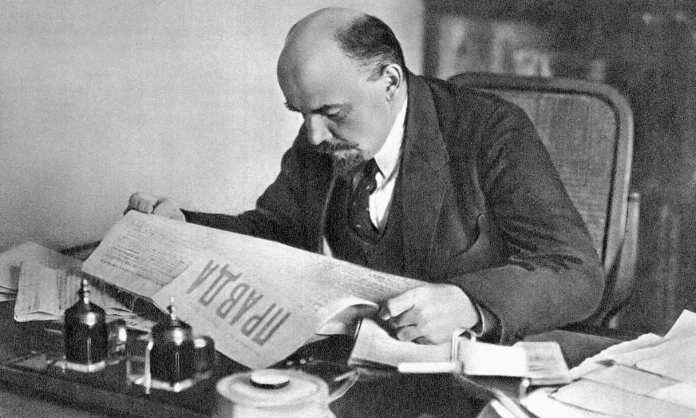Parliament is supposed to be the key decision-making body in our society. Laws, regulations and policy are discussed and voted on there, and the media spend an inordinate amount of time covering the ins and outs of parliamentary debate.
We think less often about the other decisions that affect our lives. The judgments made in boardrooms about what gets produced, how and by whom, when and for how much, shape our society much more than the decisions of the parliament.
For all the talk about Australia’s democratic system of government, only a small minority of people are involved in these decisions. This minority of rich bosses get a say over how the country is run simply because they control and/or own the offices, power and telecommunications infrastructure, mines, factories, universities and media companies that make society tick.
Their decisions are based on how much money they can make, sometimes at the expense of each other. But they also have a narrowly defined conception of the “common good”, which extends to their collective interests as a class of exploiters that needs both to check the aspirations of workers at home and compete against international capitalists for markets, raw materials and profitable investment opportunities.
Networks
The resulting power bloc is characterised by networks of wealthy individuals who control or oversee large corporations – often several in different industries. How these individuals network and operate tells us a lot about the nature of the ruling class and how it rules Australia.
The boards of public corporations are one of the clearest ways in which this networking happens. The huge corporations that dominate the Australian economy are too large for any one person to run, so there is a whole army of managers, lawyers and so on. At the top of it all sit the directors.
Investigative journalist Paul Barry’s Power Index researched the connectedness of board members in Australia, showing just how concentrated control is. By calculating the value of the ASX-listed companies for every one of the 7734 people who sit on the boards, it showed the wealth controlled by these people.
First, there was the “most influential”, the person who sat on boards with other people who also sat on wealthy boards. Former Orica chief Malcolm Broomhead is “Australia’s most connected director”. He sits on the board of BHP and chairs Australia’s second-largest public rail company. If you take the other board members who sit on those two boards and add up the wealth of those companies, Broomhead sits at one degree of separation from $1.72 trillion in market value. The Power Index points out that many of the top 10 directors are from BHP.
Another key figure in the boardrooms is Lindsay Maxsted, who is indirectly responsible for some $200 billion in ASX wealth. According to the Power Index, “[N]obody knows capital like the director of Westpac, BHP and Transurban”. Here’s how it works: Maxsted is friends with David Ryan and David Crawford. “Maxsted followed Crawford onto the BHP board and replaced Ryan at Transurban. Both Crawford and Ryan serve on Lend Lease (Crawford as chair) which is in turn audited by their old firm KPMG. KPMG audits BHP. And Align Capital once advised Lazard, which advised Transurban ... Westpac and KPMG recently signed an agreement to lease 70 percent of two of Lend Lease’s three commercial towers.”
This is just one example of what’s called “interlocking”. Being a member of several boards at once obviously builds networks of influence. An older study from 1996 (there are few more recent ones) showed that among the directors of the top 200 listed companies, the average number of board seats held was 2.6, and the figure increased as the size of the firms did.
But it’s not just in boardrooms that members of the ruling class network. They attend the same cultural functions, were educated in the same schools, live in the same suburbs, marry each other. The Power Index studied non-corporate boards and found the same people involved, or at least their wives (there were very few women in the list of board members of corporations).
Take the board of Methodist Ladies College in Melbourne, for example. Members include Melbourne University Press CEO Louise Adler; Australia Post CEO Ahmed Fahour; Bernard Salt from KPG; Qantas, NAB and JB Were director Patricia Cross; and Crazy John’s ex-CEO and Australia Post director Brendan Fleiter. When asked about the corporate heavyweights on the list, Salt protested that they just reflected the make-up at “any MLC function”.
Then there are business groups such as the Business Council of Australia, the chambers of commerce and think tanks like the Institute of Public Affairs and the Lowy Institute. Frank Lowy’s influence extended to a personal friendship with John Howard when he was prime minister, apparently speaking to him regularly and advising him on foreign policy matters. Such ties, formal and informal, help to cement the common consciousness of the ruling class. They are also designed to work out common approaches to policy matters among people who are engaged in competition.
Democracy?
The relationship between the corporate world and government is a symbiotic one. Government provides the infrastructure, regulations and laws that allow corporations to go about their business, while corporations provide governments with revenue. But it is a lot more complicated and intertwined than this.
The best known aspect of this relationship is political donations. The Greens’ Democracy4Sale website details the largest of publicly known donations, for example Clive Palmer’s Mineralogy group, which gave $300,000 to the Liberal Party in 2010-11.
But the influence of the corporate world on government is much more insidious than simple cash for influence. While most politicians in Australia are not born ruling class figures (the likes of Baillieu and Turnbull are obvious exceptions), the experience of being in government (or parliament) tends to breed the same respect for the status quo.
Preserving the status quo in itself leads to cosy relationships between the corporate world and government. The cross-over between public servants, politicians and board directors is well known: for example the likes of Bob Carr, former NSW premier turned “consultant” for Macquarie Bank, before returning to politics as foreign minister.
Looking at boards again will give examples of this. Take David Gonski, architect of the education review. The reason Gonski was chosen was surely because of his business and personal links: a change to education funding being proposed by an insider was important. According to the Power Index, Gonski chairs the board of Coca-Cola, Investec Bank, Ingeus, the Future Fund and the Sydney Theatre Company. His previous board positions include: Australian Securities Exchange (chair), ANZ Bank, ING Australia, Australia Council for the Arts (chair), Westfield, Fairfax Media, Consolidated Media, Philanthropy Australia, the Australia-Israel Chamber of Commerce and adviser to Frank Lowy, Kerry Packer (co-executor of will), Rupert Murdoch and Kerry Stokes.
Other government boards are stacked with business insiders. The Reserve Bank board includes Heather Ridout (former Australian Industry Group), John Akehurst (Origin Energy and CSL) and Roger Corbett (Fairfax and Wal-Mart). Infrastructure Australia is chaired by Rod Eddington from JPMorgan and News Corporation and includes Phil Hennessy, director of South East Queensland Water Corporation Pty Ltd, South East Queensland (Gold Coast) Desalination Company Pty Ltd and the Queensland chairman of KPMG.
One former policy adviser to the Victorian Liberal government told Red Flag about the relationship between government and the corporate world: “It is standard practice that [government] staff are instructed to provide a list of the corporations that have been consulted in the preparation of a policy brief. Ministers talk about new proposals needing to have ‘weight behind them’. ‘Weight’ here is just a euphemism for ‘corporate approval’. Bring a proposal that has not been pre-approved by the business world to the minister, and it will not get looked at.”
What’s the alternative?
So much power and wealth is concentrated in so few hands. But we have the numbers. The minority at the top lives off the labour of the vast majority of the population. Without our labour, they are nothing. Sitting in a boardroom doesn’t create value – all it can do is shuffle around the value created by the rest of us and figure out ways to maintain our exploitation.
The system they benefit from does not always run smoothly. It falls into crises and forces people to fight for their rights and their livelihoods. It is this flaw that opens the possibility of overturning the whole rotten system.
As people in countries around the world today are showing, when it all comes crashing down, so too can those who prosper at others’ expense be brought to earth.










